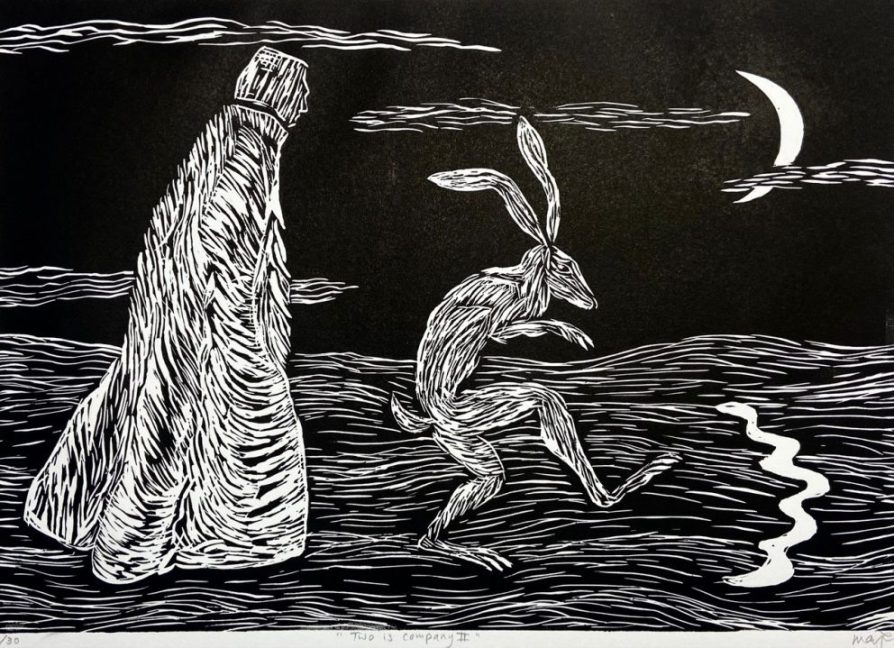The Rossendale Hare
The Hare in Folklore

The hare is a creature that has many pagan and mystical associations. Usually benign; sometimes cunning, romantic or, even, in its March courtship rituals, mad. It is largely silent, preferring to feed at night or, in summer, as the last light fades from the day, a shadowy existence which adds to its mystery.
The hare was a sacred animal to the Celts; a symbol of abundance, prosperity and good fortune. They were believed to have connections to the Otherworld. They were treated with great respect and never eaten. Celtic myths and legends often told of shapeshifting hares who could transform into human form.
Locally
In local folklore, hares are often associated with the moon, witchcraft, and transformation. The legend of the "witch's hare" tells of witches transforming into hares to roam the countryside unseen. Hares are also symbols of fertility and renewal, celebrated in springtime lore and linked to the pagan festival of Eostre.
There is an old Lancashire story of a ghostly spectre and his familiar, a large scraggy white hare, known as the ‘White Dobby'. It was said to appear on stormy nights on the road between Bardsea and Rampside, by Morecombe Bay. Looking like a gaunt and weary pilgrim, it hurried along the road without speaking. Ahead of it ran the ghostly white hare with bloodshot eyes. The hare would strike fear into any man or beast that encountered it.
This story made a strong impression on Marjan Wouda, the sculptor of Sir Hare, and she illustrated the story in both drawing and print (image above). It would have been one of the inspirations for the sculpture.
"Perhaps the witch-hare's true magic, I thought, is the wish she inspires, just for a moment, to step out of the human form. to race across the ground with the speed and the power of a hare, without tiring; to inhabit its senses and revel in a world of sound, scent and sensation far greater than our own; and to move through the night as effortlessly as if through sunlight."
From Raising Hare, by Chloe Dalton, 2024.
